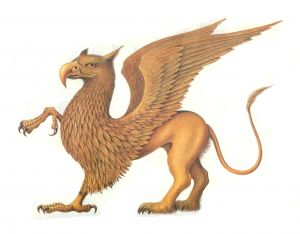
Griffins, majestic creatures blending the power of a lion and the majesty of an eagle, have captivated imaginations for centuries. Their presence in mythology and folklore across diverse cultures speaks to their enduring allure. One persistent question surrounding these mythical beasts is whether they lay eggs. While ancient texts offer tantalizing hints, the truth remains elusive, leaving us to explore the realms of myth and science to unravel this intriguing mystery.
This article delves into the rich tapestry of griffin mythology, examining their physical characteristics and exploring various theories surrounding their reproduction. We’ll also analyze the prevalence of egg-laying in other mythical creatures and consider the scientific perspective on this fascinating question.
Griffin Mythology
Griffins hold prominent positions in the mythologies of ancient civilizations. In Greek mythology, they were guardians of precious metals, fiercely protecting gold mines from intruders. Their strength, intelligence, and keen eyesight made them formidable protectors. The griffin’s association with gold likely stemmed from its perceived ability to detect and guard valuable treasures.
In Persian mythology, griffins were revered as sacred creatures, often depicted as celestial beings associated with the sun and light. They symbolized purity, courage, and wisdom. Their presence in ancient art and literature highlights their significant cultural importance. The griffin’s dual nature, embodying both earthly power (lion) and heavenly grace (eagle), resonated deeply with ancient cultures seeking to understand the complexities of the world.
Physical Characteristics of Griffins
Griffins are typically depicted as majestic creatures possessing a lion’s body, complete with powerful legs, sharp claws, and a tawny mane. Their heads resemble those of eagles, featuring piercing eyes, strong beaks, and prominent talons. Their wings, often described as vast and feathered, allow them to soar through the skies with incredible agility.
The griffin’s physical attributes reflect its dual nature, combining the strength and ferocity of a lion with the grace and aerial prowess of an eagle. This unique combination has made it a popular subject in art, literature, and fantasy, capturing the imagination of generations with its awe-inspiring appearance.
Egg-Laying in Mythical Creatures
The concept of mythical creatures laying eggs is prevalent in folklore and mythology worldwide. Dragons, phoenixes, and sphinxes are just a few examples of legendary beings often depicted as egg-layers. These depictions often symbolize rebirth, transformation, or the cyclical nature of life.
In some cultures, the act of hatching an egg represents a powerful initiation ritual or a symbol of new beginnings. The fragility of the eggshell juxtaposed with the potential for life within it adds a layer of symbolism and intrigue to these mythical narratives.
Scientific Evidence
From a scientific perspective, there is no evidence to support the existence of griffins, let alone their reproductive habits. The concept of do griffins lay eggs? remains firmly in the realm of fantasy and mythology.
Scientific classification relies on observable data and empirical evidence. As griffins are purely mythical creatures, they lack a biological basis within our understanding of the natural world.
Griffin Reproduction Theories
Despite the lack of scientific evidence, various theories have emerged regarding griffin reproduction. Some speculate that griffins reproduce through traditional mammalian means, giving birth to live young. Others propose that their unique nature allows for alternative reproductive methods, such as parthenogenesis (reproduction without fertilization).
The ambiguity surrounding griffin reproduction adds to their mystique and encourages imaginative exploration of their origins and biology within the realm of fantasy.
Conclusion
Griffins continue to captivate our imaginations with their majestic appearance and enigmatic nature. While the question of do griffins lay eggs? remains unanswered, exploring the myths, legends, and theories surrounding these creatures allows us to delve into the fascinating world of folklore and mythology. Whether they reproduce through traditional means or possess unique biological adaptations, griffins remain enduring symbols of power, wisdom, and the boundless realm of imagination.
